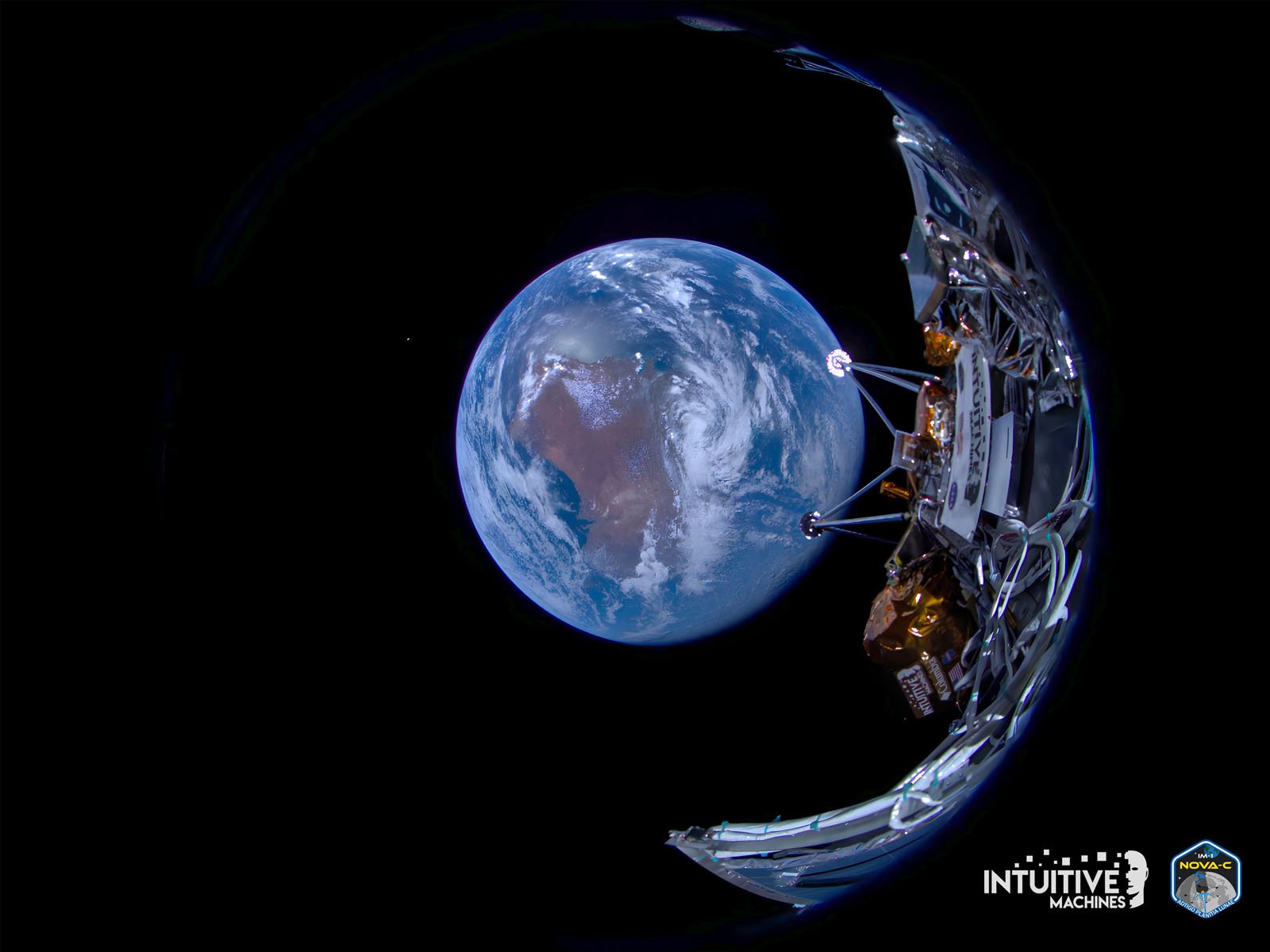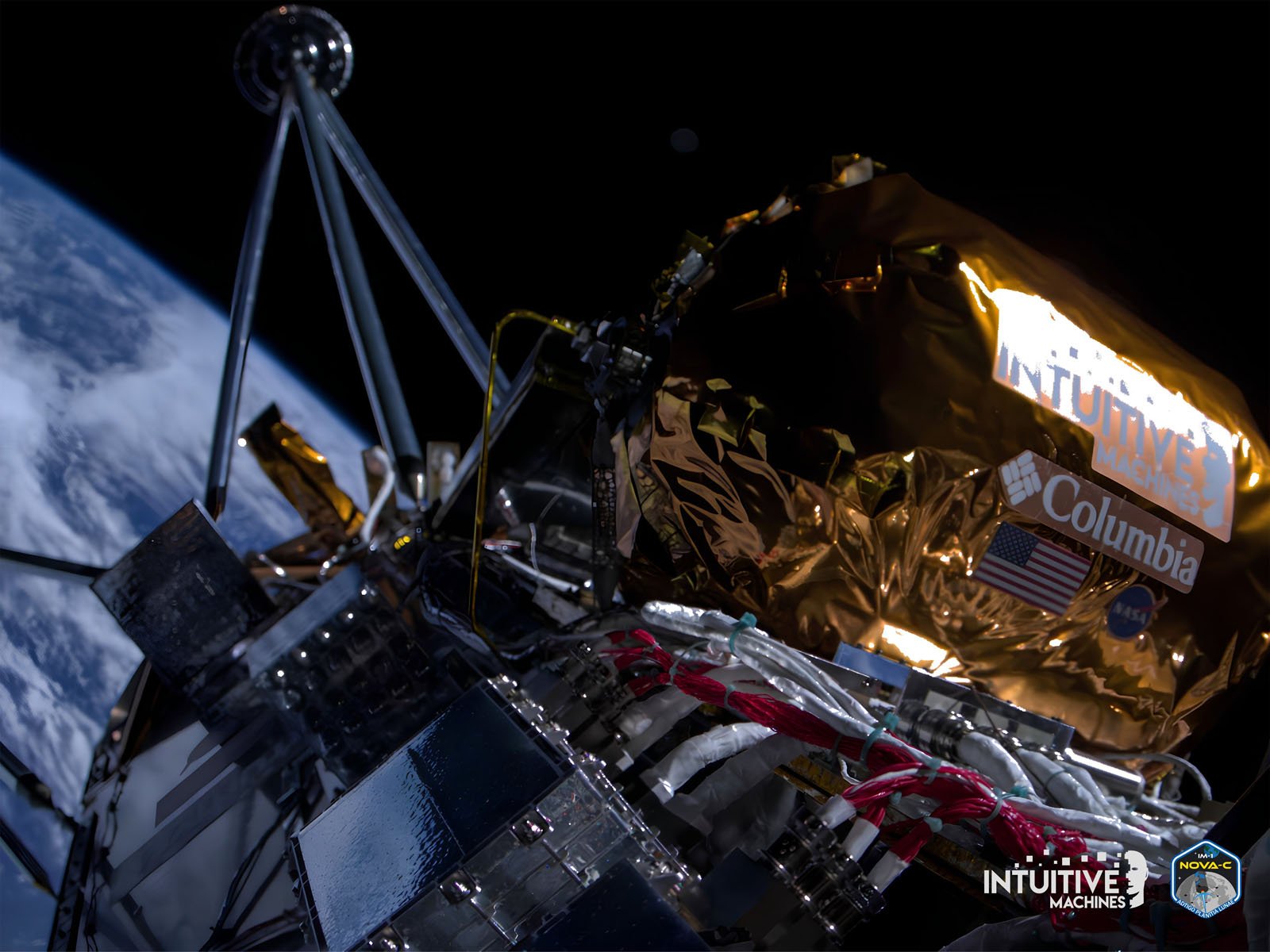
The Odysseus moon lander, developed by Houston-based company Intuitive Machines, has sent incredible photos back to Earth. The private space exploration behind the lander has selected four to share with the world.
“Out of all the images collected, Intuitive Machines chose to show humanity’s place in the Universe with four wonderful images we hope to inspire the next generation of risk-takers,” the company explains in a press release.
Intuitive Machines successfully transmitted its first IM-1 mission images to Earth on February 16, 2024. The images were captured shortly after separation from @SpaceX‘s second stage on Intuitive Machines’ first journey to the Moon under @NASA‘s CLPS initiative. pic.twitter.com/9LccL6q5tF
— Intuitive Machines (@Int_Machines) February 17, 2024
The team completed its scheduled 408-second main engine lunar orbit insertion burn today, and the lander remains in lunar orbit. Collected data shows that the 800 m/s burn was executed with 2 m/s accuracy. The lander will stay in orbit for the next day before a possible lunar landing tomorrow, February 22, or Friday morning. Intuitive Machines hopes to stream the lunar landing and will keep viewers updated on its X (formerly Twitter) page.
As CNN reports, Odysseus could land at 5:49 PM EST on Thursday, if everything goes according to plan.
“Again, Odysseus continues to be in excellent health, and flight controllers are preparing planned trajectory correction maneuvers to prepare the lander for lunar orbit insertion,” the company says. “We expect to continue to provide mission updates at least once a day on X and the IM-1 mission webpage.”
![]()
Odysseus, named for the ancient Greek epic poem attributed to Homer, will make history if it successfully lands on the lunar surface. No commercially-built lander has ever achieved this feat. It will also be the first American Moon landing in over 50 years when Apollo 17 marked the end of the famous Apollo space program. Of course, NASA is diligently working on its Artemis program, which will bring humanity back to the Moon.
NASA is involved in Intuitive Machines’ Odysseus mission, too. The mission is being performed under a $118 million contract with NASA, which is footing the bill for delivering a half dozen scientific and technological payloads to the Moon, per The Washington Post.
![]()
While Intuitive Machines has its ducks in a row, there are no guarantees when landing on the Moon. Landing on the lunar surface is exceptionally difficult, as demonstrated by the many times that talented space programs have failed to do so, including three failed landings in the last year.
Among the difficulties of landing on the Moon is the sheer extremes of conditions. As Odysseus orbits the Moon, it will pass in and out of sunlight, which the spacecraft needs to stay warm. When on the dark side of the Moon, the spacecraft’s batteries will try to keep the system alive.

Odysseus will have a precipitous drop from about 60 miles above the surface to just six miles. Once there, the craft’s cameras and navigation computers will get to work and autonomously land the craft on the surface.
When it is around 100 feet above the surface, the spacecraft’s engines will flip it vertically, its landing apparatus pointed down. Due to the lack of atmosphere, controlling the descent is exceptionally difficult and requires precise engine thrusts.
The engine will kick up quite a bit of dust, too, which NASA is keen to capture with an onboard imager. NASA plans to land numerous crafts near each other as part of the Artemis program, so the agency wants to better understand how landing impacts the immediate environment.
Image credits: Intuitive Machines
